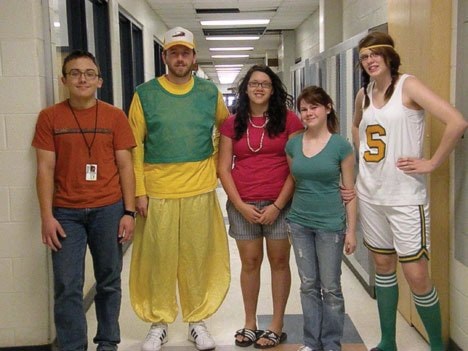The motto of the Clearview School Division is “Success is measured one child at a time.”
That sentence ultimately reflects the goal which is now in the minds of education planners and managers who are working hard to shape up a format that will render the process of learning much more adjustable to individual strengths and weaknesses of students as compared to the system in effect today.
What is happening at the Wm. E Hay Composite High School with the “Flexibility Enhancement Project” is actually a fundamental experiment leading to laying of the foundation of that future, personalized education system.
The, project which is in its second year, has already brought a lot of changes to Wm. E Hay, changes most students are happy with.
“If you come here on Tuesdays, Wednesdays and Thursdays around 10 a.m., you will see a place buzzing with activity,” says principal Norbert Baharally.
That is the the time when student are able to use their presence at school for, (for lack of a better word) a “liberated” learning experience. This is when they can go to library to seek information on a subject they need to work on, or knock on the door of a teacher for clarification on a hard-to-solve problem or use the schools computer to log on to the Internet to find extensive information on a formula for a physics homework.
“We have done anonymous electronic surveys and the students clearly express their satisfaction with the learning process,” said Baharally.
“The only things that they don’t like are the renovations, which will be completed soon and the pure math streams, which is out of our control because it is provincial curriculum.”
Interviews with the students clearly confirm Baharally’s reflections on the students’ perception of the new experiment.
“I really like this project because it gives you a flex bloc which allows you to talk to any teacher and also you are free to work on your homework in that time. Before this program, you had to go from class to class to class, and do your homework after the school,” said Aliyah Lockhat, a Grade 12 student.
“I really quite enjoy the flex bloc because it really gives you a chance to have access to all the programs and computers that you need but may not have access at home, “ said Kyla Steinwand, studying at Grade 10.
Kaitlin Poapst, Grade 12, is happy that all teachers are available for all students during the flex time.
“I like the flex bloc because if I get stuck on a problem with my homework, there is no way I can get past it at home, I have to give up, but during the flex time I can go to any teacher because all teachers are available whereas during lunch hour or after school they are not,” she said.
Matt Tokarchik has another reason for liking the flex time: “A lot of the students at the school, including myself, live out of town and ride the school bus every morning. I get in here just in time for school and I leave after school again riding the bus and it really doesn’t give you a lot of wiggle room,” he said. Tokarchik said thanks to flex bloc, he can find the time and the opportunity to talk to his teachers outside the classroom time.
Joe Thibeau is a graduate of the Wm. E Hay and now teaches math at the school.
“The big idea about the Flexibility Enhancement Project is the Carnegie Unit,” he explains.
“When I was in school, I had to spend 25 hours in the class for every credit I earned. For example, for a regular math class, I would spend 125 hours to get five credits.”
“But that is no longer the case with our school as we participate in this project.”
Students have the ability to take more time for the classes they have difficulty with and less time on the classes they are easy with.
“This structure is built into our timetable,” says Thibeau, adding that some classes are longer than others and the length of class time is determined by the students’ needs to spend on that particular subject.
“I am swamped in those periods, generally,” says Thibeau of the flex bloc when students flock to his office to ask for advice and guidance on various equations and formulae.
“That is very much the college or university atmosphere,” says Thibeau,
“Your hands are not being held by your teacher when you go to college and this project gives the students the independence that the university environment will require..
“Just as you have to go and find the professor that will guide you in your research, you have to find the teacher here during the
